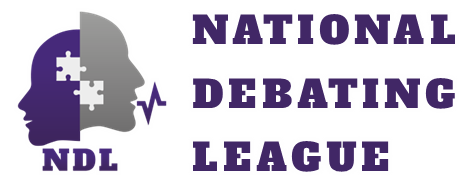📋 Speech Structure
Most humans don’t think in a perfectly structured manner. Our minds wander from one idea to the next, often following pathways without any true certainty about where we will end up. We can’t afford to deliver speeches in this manner. Your audience doesn’t think in exactly the same way as you. If we want everyone to see what we see and enjoy the process, we have to turn our speeches into guided tours of our thinking processes.
Prioritisation
The order we present information will affect our ability to use that information. If you’re the first speaker of the proposition, your definition should be one of the very first things we hear. Likewise, policies need to be raised early in a debate. Knowing the details of how the motion will be implemented will help us picture the debate with clarity.
We need to place our most important points first. The first idea in your speech will shape our perceptions about your team’s focus. Imagine we are debating about legalizing the sale of rhino horn. If your first point is about the tax revenue this can generate the audience will assume that your speech is primarily focused on the financial implications of the motion.
If you want to get the prioritization right, you’ll have to create a plan before you write your final speech.
Signposting
When you take a friend to your city’s most famous landmark, you know precisely what you’re looking at. This might not be obvious to your friend, and they might know if they’re looking at a city hall or a police station. Likewise, when we present a speech, we need to make our location in the speech clear to everyone. This can be achieved by clearly stating when you have started or ended something. We call this signposting.
Consider a tour guide saying, "You are now observing the Pietermaritzburg City Hall – the largest red brick building in the Southern Hemisphere." "We have finished looking at the Pietermaritzburg City Hall. We will now move on to the KwaZulu-Natal Legislature, where the province's laws are made." As a debater, you'll need to use phrases like, "I am now going to start my first point, which is..." and "Now that I have completed my first point, I will move on to my second point, which is..."
Point Structure
Each point raised in a debate needs to be structured. A point should always have:
- A name
- A conclusion
- A premise
- An explanation of how we get from the premise to the conclusion
- Concluding statement
Here is an example:
| Task | Example |
|---|---|
| Point Name | I would like to start my first point, which is Improving Public Health. |
| Conclusion to Prove | With this point I will discuss how a ban on smoking will improve the health of smokers and those around them. |
| Premise | Smoking is a primary cause of numerous severe health issues, affecting both smokers and non-smokers through second-hand smoke exposure. It also imposes substantial financial burdens on healthcare systems. |
| Link with Conclusion | By banning smoking, we can significantly reduce the incidence of these diseases. Second-hand smoke is also a serious health hazard, especially for children and people with existing health conditions. A smoking ban would protect the wider public from involuntary health risks associated with passive smoking. |
| Concluding Statement | In conclusion, I have shown how implementing our ban will lead to a healthier society for smokers and those around them. |
Rebuttal Structure
Information about rebuttal can be found here.
